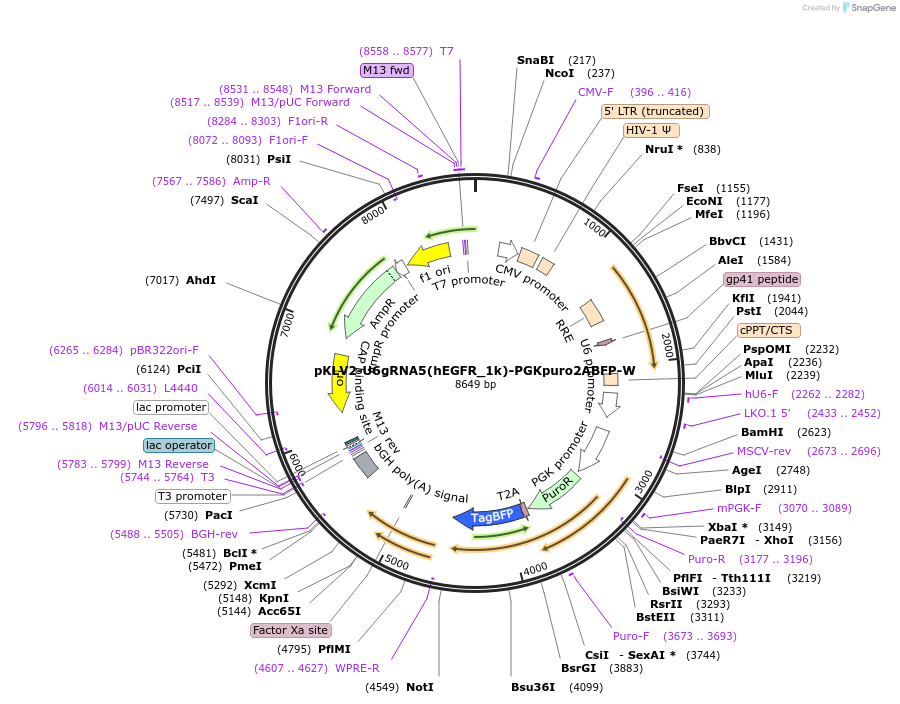pKLV2-U6gRNA5(hEGFR_1k)-PGKpuro2ABFP-W
(Plasmid
#208431)
-
PurposeLentiviral gRNA plasmid targeting human EGFR gene, co-expression of BFP tag
-
Depositing Lab
-
Sequence Information
Ordering
| Item | Catalog # | Description | Quantity | Price (USD) | |
|---|---|---|---|---|---|
| Plasmid | 208431 | Standard format: Plasmid sent in bacteria as agar stab | 1 | $89 | |
Backbone
-
Vector backbonepKLV2-U6gRNA5(BbsI)-PGKpuro2ABFP-W
- Backbone size w/o insert (bp) 8648
-
Vector typeMammalian Expression, Lentiviral, CRISPR
-
Selectable markersPuromycin ; BFP
Growth in Bacteria
-
Bacterial Resistance(s)Ampicillin, 100 μg/mL
-
Growth Temperature37°C
-
Growth Strain(s)NEB Stable
-
Copy numberUnknown
Gene/Insert
-
Gene/Insert nameEGFR
-
gRNA/shRNA sequenceGCAAATAAAACCGGACTGA
-
SpeciesH. sapiens (human)
-
MutationN/A
-
Entrez GeneEGFR (a.k.a. ERBB, ERBB1, ERRP, HER1, NISBD2, NNCIS, PIG61, mENA)
- Promoter human U6
Cloning Information
- Cloning method Restriction Enzyme
- 5′ cloning site BbsI (destroyed during cloning)
- 3′ cloning site BbsI (destroyed during cloning)
- 5′ sequencing primer AGATAATTAGAATTAATTTGACTG
- (Common Sequencing Primers)
Terms and Licenses
-
Academic/Nonprofit Terms
-
Industry Terms
- Not Available to Industry
Trademarks:
- Zeocin® is an InvivoGen trademark.
Depositor Comments
Used BbsI enzyme to clone in gRNA targeting gene of interest.
These plasmids were created by your colleagues. Please acknowledge the Principal Investigator, cite the article in which the plasmids were described, and include Addgene in the Materials and Methods of your future publications.
-
For your Materials & Methods section:
pKLV2-U6gRNA5(hEGFR_1k)-PGKpuro2ABFP-W was a gift from Sok Ching Cheong (Addgene plasmid # 208431 ; http://n2t.net/addgene:208431 ; RRID:Addgene_208431) -
For your References section:
TNO155 is a selective SHP2 inhibitor to target PTPN11-dependent oral squamous cell carcinoma. Chai AWY, Tan YH, Ooi S, Yee PS, Yee SM, Cheong SC. Heliyon. 2024 Oct 22;10(21):e39677. doi: 10.1016/j.heliyon.2024.e39677. eCollection 2024 Nov 15. 10.1016/j.heliyon.2024.e39677 PubMed 39524880



